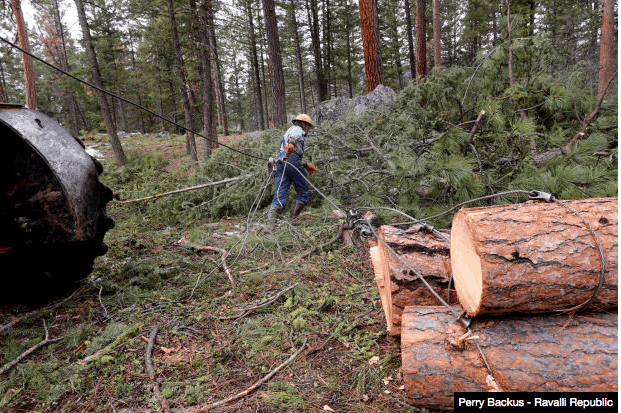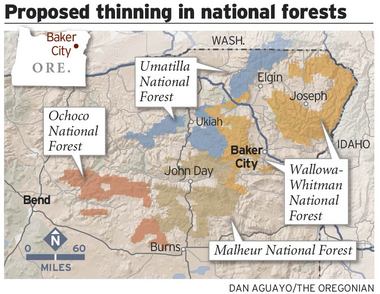
I spent the last week or so in D.C. (see photo above), struggling with various “free” wi-fi’s that didn’t work. I had a carefully crafted post on collaboration and NEPA that I lost when, as I was typing away, the connection drifted away. Even while I was writing this post, WordPress logged me out. Anyway, just a reminder to others to write your posts in a word processor and copy them over if you want to avoid frustration.
Yesterday I saw this story by Marshall Swearingen, an intern at High Country News. On the whole, I thought it was a pretty good story but was missing a counter-argument to the “bad for NEPA” claim.
Below are a couple of excerpts.
“There are some of us in the environmental movement who are very skeptical of ‘collaboration,'” says Gary Macfarlane, ecosystem defense director for the Friends of the Clearwater, “because we see it as a way, basically, to circumvent existing environmental laws.”
The idea of collaborative process has had its skeptics ever since it got a foothold in the 1990s, as people looked for ways through the polarization of the timber wars. The basic idea was to get traditional foes like loggers and wilderness advocates into the same room to hammer out proposals that might spare the Forest Service some costly litigation. But critics complain that these local, collaborative groups shift power from urban conservation interests to a rural minority.
Now, “existing environmental laws” is fairly broad. How can a process “circumvent” ESA? Perhaps they are talking about NEPA… which is only one law.
But Macfarlane is concerned that the forest’s managers are moving too fast in a direction that undermines the 1970 National Environmental Policy Act (NEPA), a view shared by the other groups that signed onto the letter to Vilsack. Under NEPA, the Forest Service analyzes and proposes various alternative actions, then fine-tunes them by considering public comment before making a decision. But in the collaborative process, Macfarlane fears, the proposal drafted by locals will be given inordinate weight, and people who don’t attend the meetings, but comment during the NEPA review — which the collaborative draft must still go through — won’t be heard
Did we just go from “environmental laws” to one procedural law? I find this confusing because in the development of the Forest Service NEPA regulations and the NFMA regulations, collaboratively developed alternatives were thought to be a good thing and were written in to the regulations. As readers are also aware any regulations need to be “cleared” by other agencies, which include the Council on Environmental Quality and the Department of Justice. CEQ folks are supposed to be the experts on NEPA. For our partisanized friends, it seems unlikely on its face that in a D administration, CEQ and DOJ would seek to undermine NEPA. Perhaps the FS led them astray, somehow? Based on my knowledge of Beltway power relationships, this seems exceedingly unlikely.
I think there is something there, but it’s not about NEPA. I have an associate (I’ll just call him TIG for “timber industry guy”) who feels the same as Macfarlane about “violating NEPA.” If you listen carefully, though, he is afraid that the collaborative will get overly invested in a dumb idea (say diameter limits, in his worldview) and the flush of joy at achieving agreement, plus the inertia of changing something collaborated upon, will overwhelm common sense, scientific reality, or careful analysis. Which, in the world of humans, is a reasonable fear. And it actually may be the same as Macfarlane’s fear.
But I think we need to go back to the way things used to work to really understand. In the past, the FS, helped by others, would develop a “more management” alternative and a “less management” alternative and attempt to get somewhere in the middle. Each coalition of interests would have discussions with the Forest Service. Maybe there would be phone calls from the Administration to the RF or the Supe providing positive vibes for moving in the direction of that Administration’s supporters. But the interpolation of all these points of view in the preferred, at the end of the day, was internal. The true deciders were the Forest, the Region, the Administration and (if litigated) the Courts. These remain the ultimate deciders.
It seems to me that the advantage of collaboratively developed preferred alternatives is that it is out there on the table as to how the alternative was developed, not behind closed doors. So if there’s a dumb idea somewhere in there, people will have an opportunity to comment and the ultimate decision will be made by the same old forces.
When I observe the Black Hills FACA Committee, the Forest Supe doesn’t always do what they recommend. But the Supe has to stand up and say what his arguments are for not doing so.
The bottom line is that there is no argument really that it “violates NEPA” to have a collaboratively developed proposal. People have had special places at the table, based on various characteristics, including political connections and the threat of litigation. They still have those very same places when the ultimate decision is made.
So it’s really up to the forest folks of the first few forests (how’s that for alliteration?) to show that collaborative ideas will be carefully reviewed and the critiques during the comment period will be taken seriously. In fact, I think it would be cool if there were both ends of the spectrum, (the old combatants) and the forest folk sat down and the forest folks explain to them why they landed where they landed, when they land there (and someone there taking note and posting them).
Now sometimes there can be tension within the forest and between the forest and upper levels in terms of the decision (including the political appointees). But the FS is an executive branch agency, and as the judge in the 10th Circuit roadless case appeal (about Wyoming not being a cooperating agency? I don’t remember the context) it’s not a violation of NEPA if someone decides to do something you disagree with. As the judge said “elections have consequences.” I have observed both kinds of Administrations letting their opinions be known during the forest planning process, and they always have rationales for what they do. You may disagree with them.. you may even think they are “illegal” but time and courts can tell about the latter (if you have the bucks to litigate).




